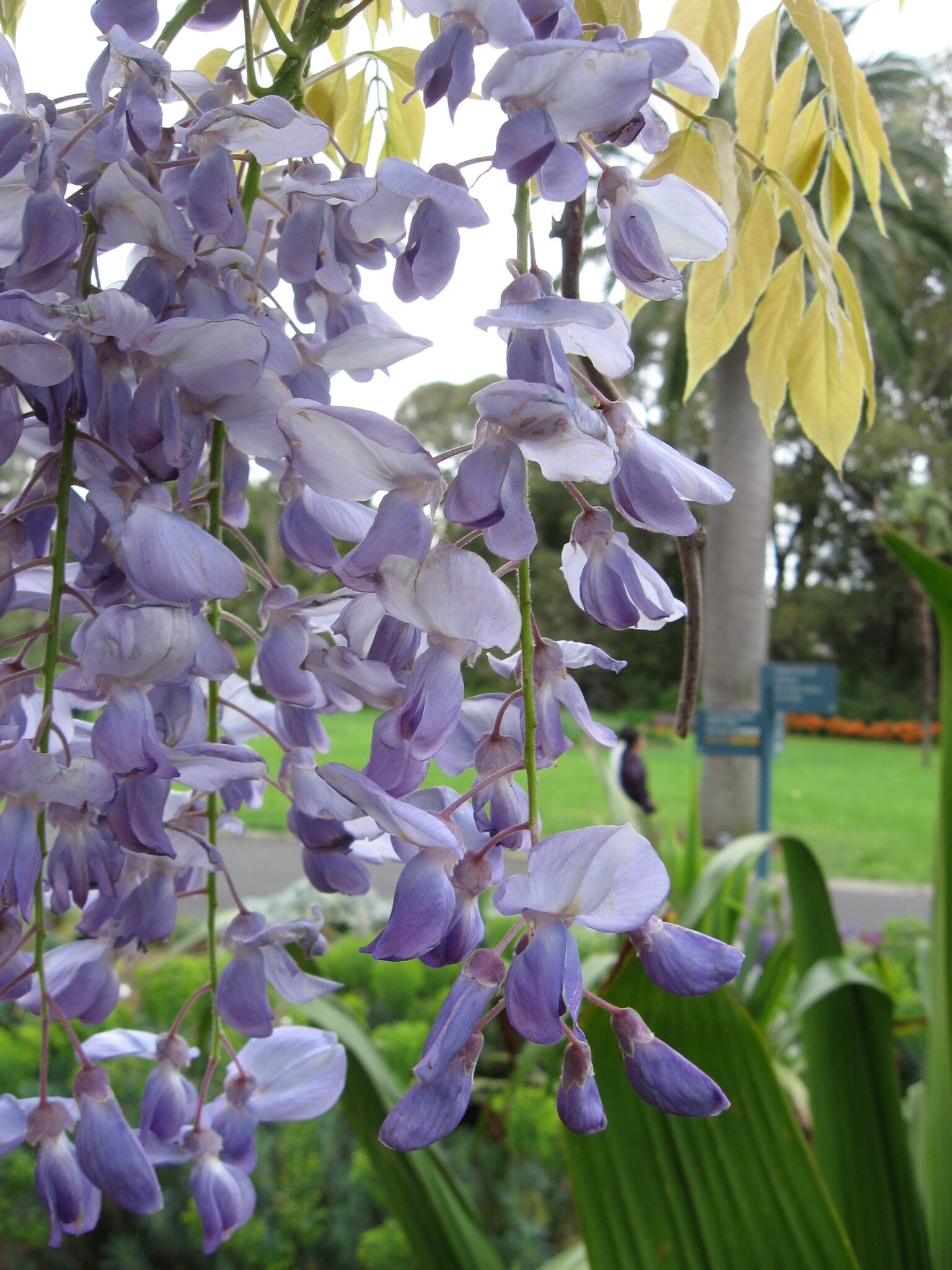
Commemorating Caspar Wistar (1761–1818), Professor of Anatomy at the University of Pennsylvania.
Deciduous woody climbers. Leaves odd-pinnate. Leaflets to 19, in opposite pairs with a single terminal leaflet; stipules soon shed, the stipels more or less linear and persistent; stalks rather swollen. Flowers numerous, in pendent unbranched clusters. Sepals united, bell-shaped to cylindrical and with 5 lobes, the 2 uppermost generally united. Petals white, pink, lilac, blue or purple. Standard large with 2 protrusions at the base. Stamens 10, 9 united into a tube,1 free.ovary with several ovules. Fruit pod elongated, large, shaped like that of the Broad Bean, flattened; seeds several.
The original spelling of the generic name is accepted in preference to Wistaria. Leaves, fruits and especially the seeds are poisonous. The account of cultivars below follows, for the most part, the treatment of Valder (1995).
6 species from China, Japan and N America.
Mostly by grafting of selections, although it is possible to propagate from seed and by division, layers and cuttings.
Leaves deciduous, pinnate, stipels present and persistent; flowers in long, unbranched, pendent clusters, mostly white or lilac.
McMillan-Browse (1984),Valder (1995).
Source: (2002). Fabaceae. In: . Horticultural Flora of South-eastern Australia. Volume 3. Flowering plants. Dicotyledons. Part 2. The identification of garden and cultivated plants. University of New South Wales Press.

Cultivar and hybrid of uncertain origin
W. × formosa Rehder is a putative hybrid between the Japanese and Chinese species, characterised by a mix of the characters of the presumed parents, having 9-15 leaflets and flowers that open more or less simultaneously. It is said to have originated as an artificial cross, W. floribunda 'Siro Noda' ('Alba') seed × W. sinensis pollen, in the garden of C. S. Sargent, Brookline, Massachusetts, in 1905. The lilac flowers have a pinkish tinge. As there is some doubt about the true parentage of this plant it is often referred to as the cultivar 'Formosa'. Plants currently available as the cultivar 'Issai', sometimes regarded as a clone derived from W. × formosa, are best referred to W. floribunda.
Twining clockwise. Leaflets 13-15. Flowers relatively small and densely packed in clusters 17-21 cm long. Standard 1.8-2 cm wide, pale violet, the wings and keel slightly darker. Early flowering. Often listed under w. sinensis but exhibits the general characters of w. floribunda; possibly a hybrid. Int. by William h. Chandler, one time Dean of Agriculture at the University of California, in 1952-3 and named after his wife. Distributed to Australia from New Zealand in 1995.